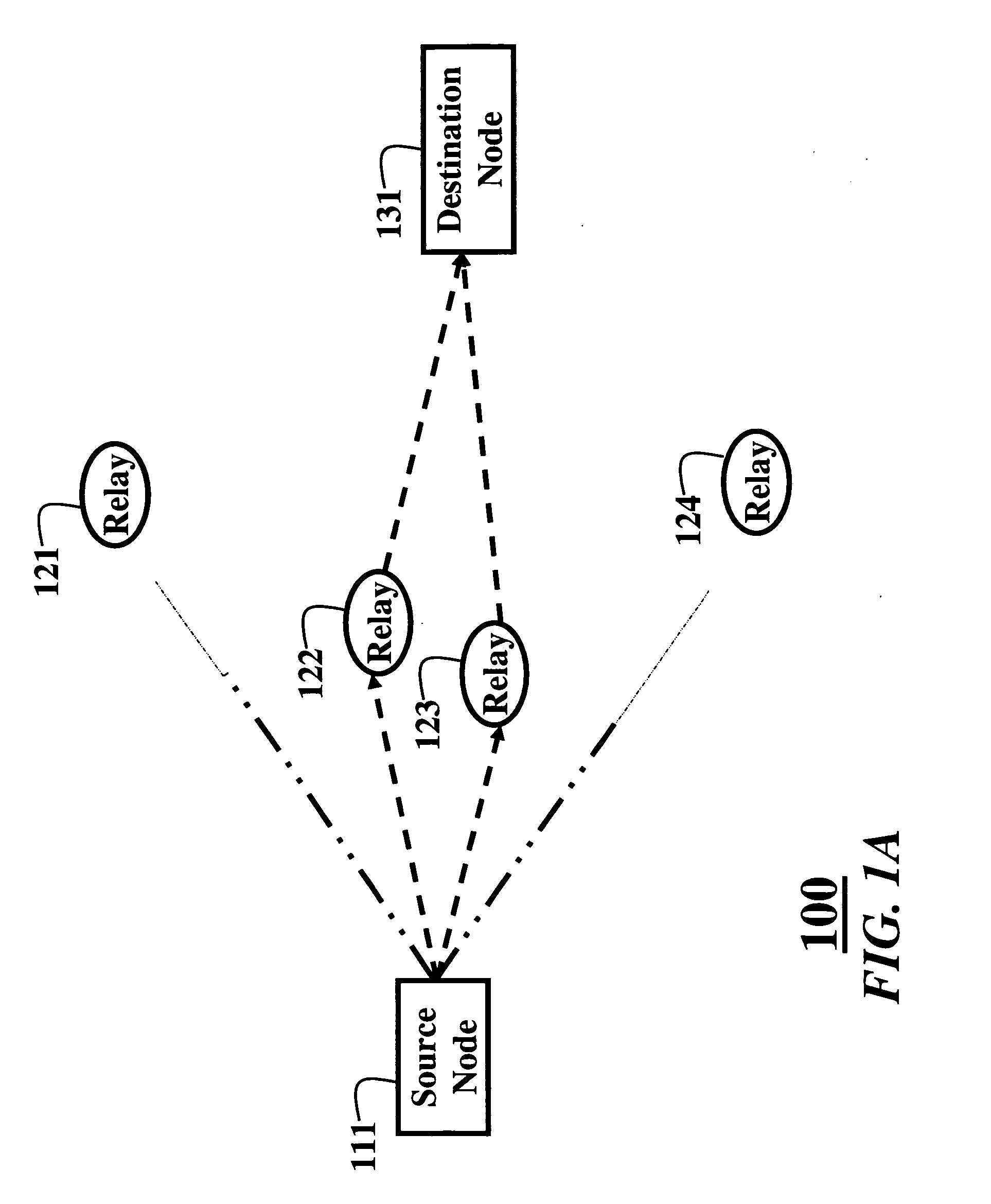Method and system for communicating in cooperative relay networks
a cooperative relay and communication technology, applied in data switching networks, high-level techniques, digital computer details, etc., can solve the problem of not considering the cost of acquiring csi, and achieve the effect of reducing the total power consumption of the network
- Summary
- Abstract
- Description
- Claims
- Application Information
AI Technical Summary
Benefits of technology
Problems solved by technology
Method used
Image
Examples
Embodiment Construction
[0032] Cooperative Relay Network
[0033]FIGS. 1A and 1B show communications networks 100 according to an embodiment of our invention. It is desired to minimize power consumption in the network while sending data packets. The method includes training 10 and operational 20 phases, see FIG. 2. In one embodiment of the invention the phases 10 and 20 are combined.
[0034] The cooperative relay network 100 includes a source node 111, a set of N relay nodes 121-126, and a destination node 131, i.e., source, relays, and destination, respectively. All channels between all nodes are frequency non-selective channels that undergo independent Rayleigh fading.
[0035] Therefore, the channel power gains hi from the source to the set of relays, and the channel power gains gi from the set of relays to the destination are modeled as independent, exponentially distributed random variables with means hi and gi, respectively, where i=1, . . . , N. The mean channel power gains depend on a distance between t...
PUM
 Login to View More
Login to View More Abstract
Description
Claims
Application Information
 Login to View More
Login to View More - R&D
- Intellectual Property
- Life Sciences
- Materials
- Tech Scout
- Unparalleled Data Quality
- Higher Quality Content
- 60% Fewer Hallucinations
Browse by: Latest US Patents, China's latest patents, Technical Efficacy Thesaurus, Application Domain, Technology Topic, Popular Technical Reports.
© 2025 PatSnap. All rights reserved.Legal|Privacy policy|Modern Slavery Act Transparency Statement|Sitemap|About US| Contact US: help@patsnap.com



